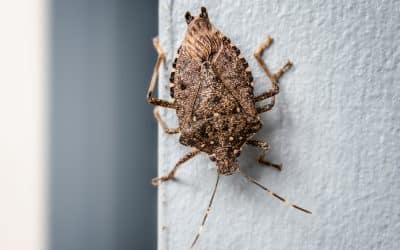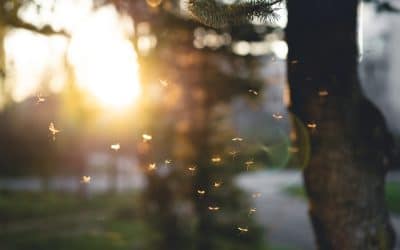
Pest Identification: PEST ID: Conifer Seed Bug
Western conifer seed bugs are a common nuisance in homes during fall, entering through cracks and crevices to overwinter. They are considered a nuisance pest because they don't breed indoors, bite, or infest food. In spring, they attempt to return outdoors, and if unable to find water or an exit, they may die. Near spring, they may be seen moving slowly, often a sign of dehydration or impending death.
Their host plants include pine trees, white spruce, Douglas fir, and hemlock. While they don't significantly damage these trees, the presence of these trees in an area increases the likelihood of encountering these bugs. Part of the leaf-footed family, they are noisy flyers but often refrain from flying indoors to conserve energy during winter. If threatened or squished, they emit an odor similar to pine, earning them the nickname “stink bugs.” This smell can linger in vacuums if they are used for removal, and pets typically avoid these insects due to their odor.
Since western conifer seed bugs are not listed on any pesticide label, they cannot be specifically targeted with sprays. However, regular pest maintenance plans can indirectly reduce their presence. Preventive measures include ensuring tight-fitting screens and checking areas around air conditioners and doors with damaged weather stripping, especially on the sunny side of the home where they often enter.
Professional pest control services can provide a Fall Invader Spray, ideally applied in August or early September, to help prevent their entry. Once inside, managing these bugs becomes more challenging.
Conifer Seed bugs are considered an Occasional Invader, the best time to treat for them is early Fall (mid-August to early September) with our Fall Invader Program. Once they get in, they are in. Please call Ford's Hometown Services for a quote.

Buzzwords
Bug Off! Keeping Stink Bugs Out of Your Home
Fall in New England brings crisp air, colorful leaves, and stink bugs. As soon as the temperatures start to dip, stink bugs start searching for a cozy spot to ride out the winter, and your home is often their top choice. Unless you know how to stop them. With a few...
Protect Your Lawn: What You Need to Know About Grubs
You work hard to maintain a beautiful yard. But if you start noticing unexplained patches or spongy turf, grubs might be the culprit. These pesky beetle larvae feed on grass roots, turning lush lawns into a patchy mess. Bottom line: they are a threat to your yard....
Buzz Off: How to Identify Common Flying Pests in Massachusetts
When August rolls around, it’s time to savor those last sweet weeks of summer. But the heat and sunshine also bring out a surge in dangerous summer pests. Many bite, others sting, and some just won’t leave you alone. Do you know what’s buzzing around your yard? From...


